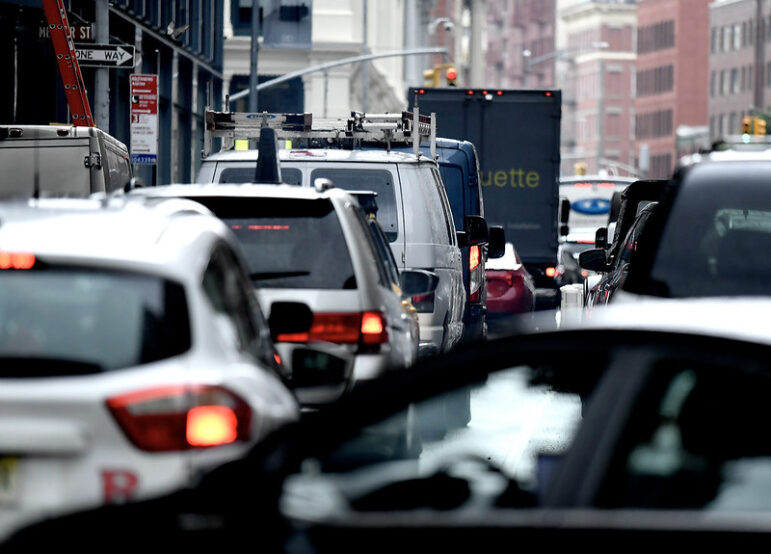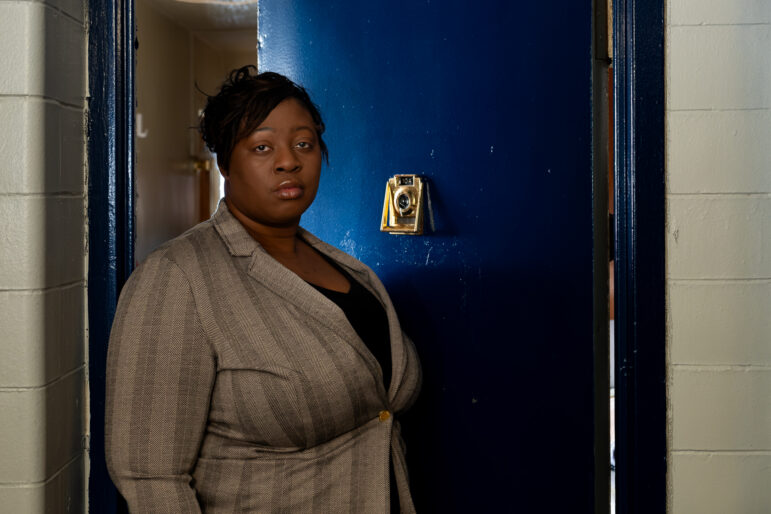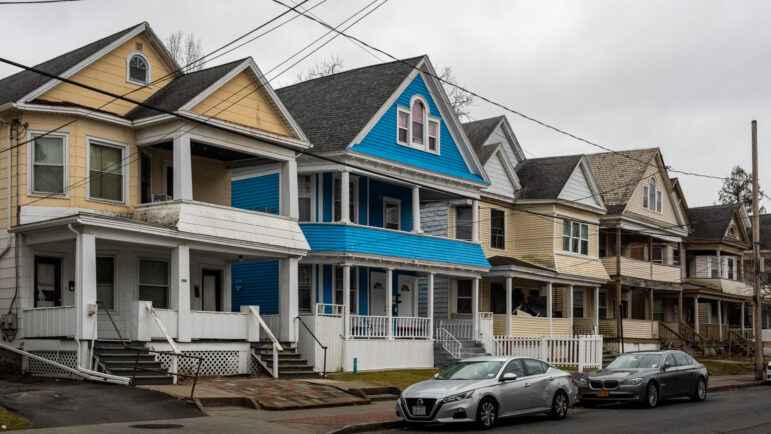
Ed Reed for City Hall
NYCHA chairwoman Shola Olatoye seen with the mayor.
On Wednesday, NYCHA informed residents of two developments—Wyckoff Gardens in Boerum Hill, Brooklyn, and Holmes Towers on the Upper East Side—that their sites had been chosen for a new mixed-income housing initiative that NYCHA is trying as part of its 10-year, NextGeneration plan.
The new developments are expected to generate money for much-needed repairs to the existing NYCHA buildings, and they will contain 50 percent market rate housing and 50 percent affordable housing, the latter available to individuals earning a maximum of 60 percent of New York’s area median income, which translates roughly to a family of three making $46,600 a year or less. Residents were informed via robocalls that the Authority is planning engagement sessions.
City Limits spoke to NYCHA Chair Shola Olatoye to get more details about the project.
City Limits Will residents of Wyckoff Gardens and Holmes Towers have first priority in the lottery for the affordable housing units built on their lands?
Chair Olatoye: This is our ten-year strategic plan with fifteen very specific strategies. This is one of those strategies and the values that run through our plan are around engagement and transparency. The work we’re beginning this week at Holmes and Wyckoff is focused on saving NYCHA, reinvesting in those developments and across the Authority writ large and increasing affordable housing.
What we can commit to legally and what we’ve done historically is, there will be a 25 percent preference for NYCHA residents in any new development. We will ensure that at those developments and at developments across the city, NYCHA residents are made aware of the application process.
Wyckoff will also be subject to a ULURP action which will ensure a 50 percent Community Board preference in addition to the 25 percent NYCHA preference.
CL: Are residents of these developments eligible for the affordable housing? Isn’t average income of NYCHA family $25,000?
Olatoye: It’s $23,000 a year. The affordability level for the 50 percent affordable component is a minimum. If we can go deeper based on additional programs, we will. We are also very interested in the potential layering of additional Section 8 resources.
CL: How much money are you expecting to generate?
Olatoye: It’s going to be a competitive process so I expect maximum revenues.
CL: How were the sites chosen? Why not Smith Houses, for example, which was targeted by Bloomberg’s Infill plan?
Olatoye: We considered a couple of key criteria. One was the capital needs of the development. Two was the development opportunity—was there actual space, was there actual FAR, floor area ratio, to build a building? Three was the surrounding real estate market and the ability to recognize real opportunities for the Authority. And fourth, are we building on, leveraging nearby public investment? We are getting ready to invest $100 million at Gowanus, which is just to east of Wyckoff. We are not just building buildings, we are hoping to reconnect and build neighborhoods.
These were the first two of this program. There will certainly be more.
CL: What kind of response are you expecting from residents?
Olatoye: The only thing I have come to expect is lots of engagement and change—those are the only two constants in our lives. I think residents will be very interested in what the plan is. I think they will be surprised that there isn’t a plan and we’re actually coming to them to talk to them. I think there will be a healthy dose of skepticism. I think it was Woodrow Wilson who said Democracy survives on people actually trusting one another, so we gotta trust first.
CL: Was there a concerted effort to avoid developments targeted in the previous infill plan?
Olatoye: No.
CL: In Bloomberg’s Infill plan, the new developments were slated to be 80 percent market rate and 20% affordable. The thought was, this would generate the most money for NYCHA. How did you arrive at your metric of 50/50?
Olatoye: I wasn’t here for that plan so I can’t speak to it. This is one of fifteen strategies that are part of NextGeneration NYCHA. Revenues raised through this initiative will be added to our parking initiative, our commercial initiative, our preservation initiative, and others. This is not meant to be seen in a vacuum. It real is part of a comprehensive plan to get NYCHA’s financial health in order, create more affordable housing, and invest in our Authority writ large.
ᐧ









One thought on “NYCHA Targets Mixed-Income Development”
We need the city to supervise this housing specialty wise tower . Because we the tenant’s ask about this rat’s hole in the courtyard and front of building the holes in hallway nothing has been done. Stealing time on the clock and abuse of disable, seniors. Also why is that this manager seems to be on vacation all the time. U want a fear hearing with 250 BROADWAY. BECAUSE WISE TOWER IS USELESS. WE ARE GOING BACK TO COURT BECAUSE NONE OF THE REPAIRS HAS BE DONE THE RIGHT WAY.AND THE WORKER SPEND MORE TIME ON THE PHONE THAT THEY DO WORKING. I NEED OUT AND CLOSE TO MY NETWORK .THIS ABUSE AND MONEY THAT I HAVE SPENT IS NOT FAIR. GET ME A MEETING WITH PEOPLE THAT KNOWS WHAT THEIR ARE DOING. BECAUSE THE PROOF IS A FACT JUST LOOK AT THE GROUNDS AND THEN YOU TELL ME IF I’M MAKING THIS UP.